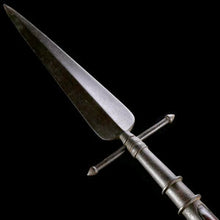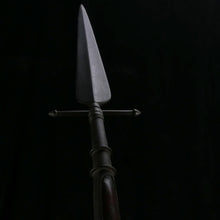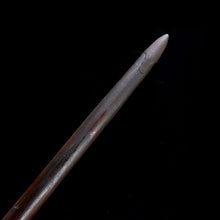Napoleonic Wars Sergeant’s Spontoon, 1810
- Regular price
- £1,500
- Sale price
- £1,500
- Regular price
-
- Unit price
- /per
Adding product to your cart
Length: 244cm (8ft)
Steel and wood. Twelve inch head with double edged blade, over cross bar with pointed terminals, integral fixing mount and wooden haft, the foot with pointed steel ferrule.
The spontoon was carried by a Sergeant in the British Army as a weapon of defence, and a symbol of discipline and authority. The long wooden shaft with a steel spear point was intended for use in protecting the regimental colours (King’s Colour and Regimental Colour) from being attacked and captured. The honour of guarding the colours was usually given to meritorious Sergeants, one or more of whom would accompany the Ensigns or junior Lieutenants to form a ‘Colour Party’.
The regulation spontoon was around 7 to 9 feet in length and was in common use from the mid-17th to early 19th century. The short cross bar was to keep the blade from penetrating too deeply into the body of an enemy. In defence, it had a long reach and was of use when infantry had to repel cavalry. As muskets replaced pikes of earlier centuries, the spontoon became a symbol of authority and discipline. It was carried by Battalion Company Sergeants (but not by the Light or Grenadier Company Sergeants).












